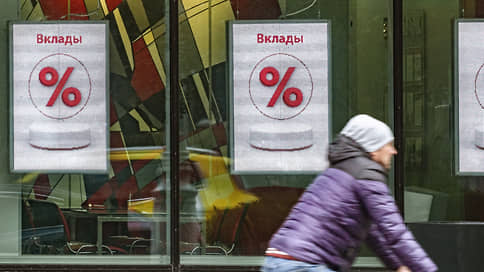Rates on long-term deposits of legal entities exceeded rates on long-term corporate loans
[ad_1]

After the key rate was raised in September and on expectations of a continuation of the trend, for the first time since March 2022, rates on long-term deposits of legal entities exceeded rates on long-term corporate loans. But if last April the key rate began to decline, then in October its growth, on the contrary, accelerated. As a result, experts assume that bank margins will decline until the Central Bank changes monetary policy.
At the end of last week, the Bank of Russia published information on interest rates on loans and deposits in rubles. According to the regulator, in September, rates on issued long-term corporate loans were lower by more than 0.5 percentage points (pp) than rates on attracted long-term deposits of legal entities – 12.01% versus 12.57%, respectively.
The rate on long-term deposits of legal entities showed the highest increase compared to last month – 3.78 p.p. At the same time, the rate on long-term corporate loans in September compared to August rose by only 0.77 p.p.
The last time rates on corporate deposits exceeded rates on loans to companies was in March 2022, immediately after the outbreak of hostilities in Ukraine, and the gap was even greater – 16.14% versus 13.15%. This happened against the backdrop of a sharp increase in the Central Bank’s key rate from 9.5% to 20%.
However, already in April last year the key rate began to decline, reaching 14% by the beginning of May. As a result, in April 2022, rates on long-term loans exceeded rates on long-term deposits, although only slightly – 12.9% versus 12.84%, and in May the gap became more noticeable in favor of rates on borrowed funds (11.97% versus 10 .36%).
Now, unlike the situation last year, the key rate continues to rise: in September it increased by 1 percentage point, from 12% to 13%, and in October by 2 percentage points, from 13% to 15%. Thus, the imbalance in rates on long-term deposits and loans may persist.
As a result, experts explain, bank margins will continue to decline. As Yuri Belikov, managing director of the Expert RA rating agency, clarified, if banks linearly moved loan rates up following the key rate, they would increase the potential for their losses.
“At the same time, the largest corporations that can afford to be funded from all available sources – in banks, on the public debt market – are already heavily leveraged on average, and therefore are especially sensitive to rising rates,” adds Yuri Belikov. “For banks, the largest corporate clients are the most attractive borrowers, and for their sake credit institutions are willing to sacrifice interest margins.”
The situation with deposits of legal entities is fundamentally different – according to Yuri Belikov, bank funding rates are not restrained by anything. “In addition to the already implemented increases in the key rate, they are still fueled by high inflation expectations, not to mention the likelihood of a further increase in the key rate announced by the regulator, and the volatility of liabilities requires an increase in the attractiveness of deposit conditions,” explains the expert. “The result is obvious – the net interest margin banks will contract until there is a reversal of monetary policy.”
However, the chief analyst of Sovcombank Natalya Vashchelyuk clarifies that the share of long-term deposits in the total volume of deposits of legal entities is usually very small – in September it amounted to less than 1%, while 95% accounted for funds placed for up to 30 days (including accounts “poste restante”). “It should also be remembered that certain preferential programs continue to operate in lending to companies – this limits the influence of the key rate on the average rate on loans issued,” the expert notes.
In addition, Natalya Vashchelyuk is confident that the financial results of banks at the end of the year will be supported by the fact that more than 40% of the corporate loan portfolio are loans issued at floating rates.
[ad_2]
Source link





